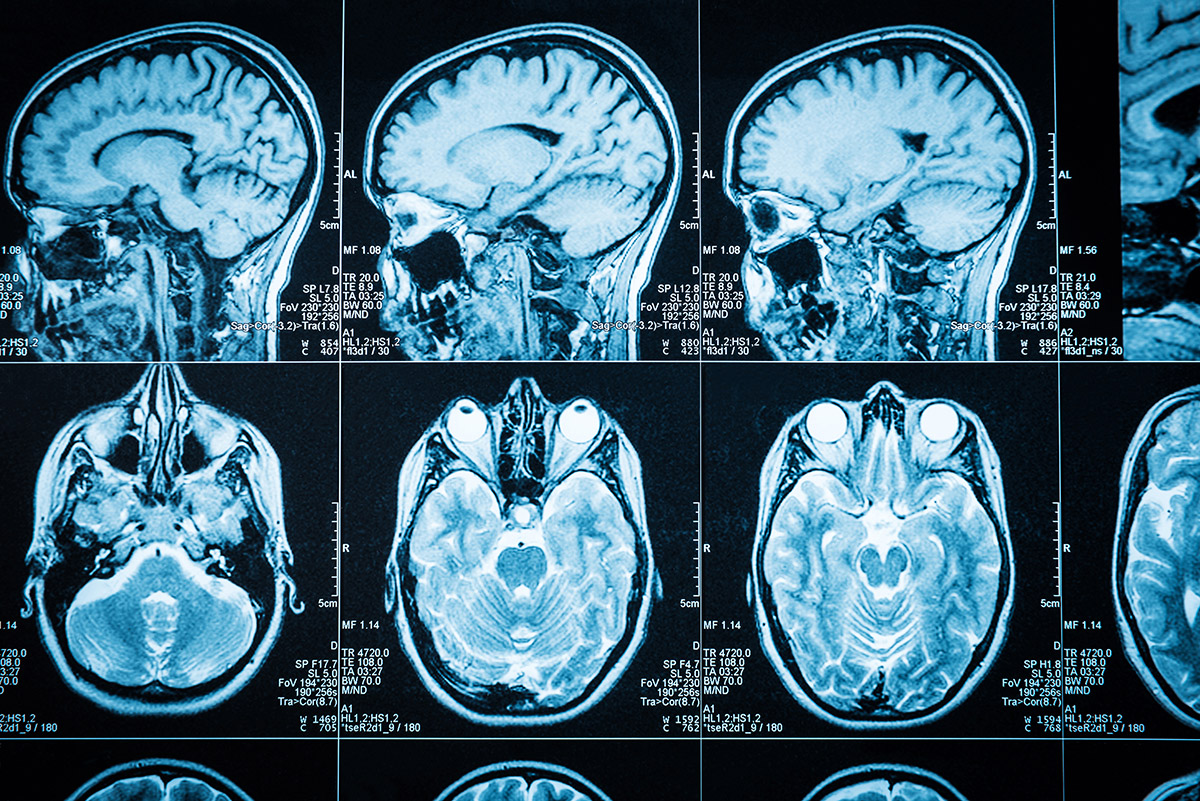Concussions Might Soon Be Diagnosed on the Field

Closeup of a CT scan with brain photo via Shutterstock
Though concussion awareness has never been higher, the process for diagnosing head trauma remains largely subjective and inexact. Kevin Hrusovsky and his team at Quanterix, a Lexington-based high definition diagnostic company, is aiming to change that.
Quanterix is one of the finalists in the NFL and General Electric’s $10 million Head Health Challenge for its development of Simoa, a refrigerator-sized machine that uses a blood test to determine the severity of potential concussion-causing impacts. When the brain gets injured, it releases certain protein biomarkers that seep into the bloodstream. Simoa can detect these biomarkers and determine whether somebody has suffered a concussion within one hour of the time the event occurred.
“Until today, diagnosing concussions is very subjective based on a neurologist’s or some trainers’ assessment of an athlete,” says Hrusovsky, Quanterix’s CEO. “Typically, they’re looking for things like: Are they dizzy, do they know what month it is, do they know what president is currently in office? I would liken it to having a doctor taking a hammer and hitting you in the knee to determine whether you’re healthy or not. It’s somewhat archaic compared to what this science is able to do.”
The Department of Defense and National Institutes of Health have conducted studies using Quanterix’s technology over the last several years, including using it on military personnel who may have sustained a brain injury in the line of duty. The NFL has awarded the company a total of $800,000 in grants over the last year as part of its newfound effort to promote concussion research.
Hrusovsky spoke with Boston recently to talk about what the future holds for this technology and whether he thinks playing contact sports is safe given the high risk of head trauma (96 percent of deceased ex-NFL players who donated their brains to science have tested positive for chronic traumatic encephalopathy, the degenerative brain condition known as CTE). Answers have been edited for brevity.

Simoa, Photo provided.
What do you see in store for Simoa over the next year?
We want to keep developing our instrument to make it smaller and smaller. Right now, our instrument is the size of two refrigerators. Even though the sample that goes into it is just a vile of blood, the size of the instrument is very large, because we’re doing everything in that instrument.
What we also want to do is build it onto a bench top unit so that it’s much easier to cart and maybe could be used on the side of a playing field. We also want to have a hand-held. The technology is there to shrink down the instrument.
The third area is, we’ve already identified seven or eight biomarkers in blood that our technology can measure that all have different indications. For instance, some of them might be better indicators to suggest that you’re now on the boarder of creating a neurodegenerative disease that could lead to depression, anxiety, and other symptoms that could lead to suicide. All of these markers have a different role. We’re building up that menu of additional markers to get more science around this technology.
Did you have any qualms about taking money from the NFL considering how the league suppressed concussion research for so many years?
I’m always suspicious of all angles. But I must say, I have to give the NFL and General Electric tremendous credit for giving us these awards. They’ve single-handedly catalyzed so much interest in our company. The money itself has been helpful to further develop the concussion technology, but the attention our company is now getting really wouldn’t have come about if it weren’t for the NFL.
My whole life I’ve played a role in bringing other disruptive technologies to the patient. We think the food industry, as an example, at times has really created some addictions to things like sugars that have been very negative for health. So we will go up against whatever agency or group gets in the way of what we think is bringing health or eliminating pain and suffering.
Would you let your kids play football or other contact sports?
With the right information and the right concussion protocols, I would be very supportive of my child playing. But it would have to be a properly informed organization.
It’s pretty interesting to watch Pop-Warner, which has had a 9.5 percent reduction in participation. But yet, they’re continuing to evolve very productively in non-hitting practices. I think a lot of those kinds of approaches will continue to take the most advanced science and then apply it.
And that’s what I find so fascinating about this field right now. It’s really requiring a translator to take the most advanced science and reduce it into athletics and on the sidelines. That translation is not simple and it’s the first time I’ve ever seen such deep science move into the consumer world so rapidly. That makes it very unique.


